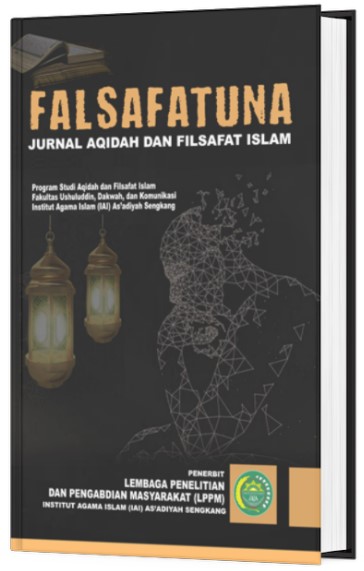THE CONCEPT OF TAWHID IN IBN SINA'S METAPHYSICAL PHILOSOPHY
KONSEP TAUHID DALAM FILSAFAT METAFISIKA IBNU SINA
Keywords:
tawhid, Ibn Sina, Islamic metaphysics, Necessary ExistentAbstract
This research examines the concept of tawhid (divine unity) in the meta-physical philosophy of Ibn Sina, a prominent 11th-century Muslim philoso-pher. Through textual and philosophical analysis, the study investigates how Ibn Sina articulated a concept of divinity that is transcendent yet ac-cessible through rational reasoning. Using a philosophical framework that integrated Aristotelian and Neo-Platonic traditions, Ibn Sina developed sophisticated arguments to demonstrate the unity and necessity of the Necessary Existent (Wajib al-Wujud). The findings reveal that Ibn Sina's concept of tawhid transcends conventional theological understanding, of-fering a robust rational foundation for Islamic faith. His metaphysical con-ception of God as a singular, simple, immutable, and eternal Necessary Existent has made significant contributions to Islamic intellectual tradition and comparative philosophy.
Downloads
References
Adamson, P. (2013). From the necessary existent to God. In P. Adamson (Ed.), Interpreting Avicenna: Critical essays (pp. 170-189). Cambridge University Press.
Adamson, P. (2019). Philosophy in the Islamic world: A history of philosophy without any gaps. Oxford University Press.
Amir-Moezzi, M. A. (2018). The divine guide in early Shi'ism: The sources of esotericism in Islam. SUNY Press.
Bertolacci, A. (2016). The reception of Aristotle's Metaphysics in Avicenna's Kitāb al-Šifāʾ: A milestone of Western metaphysical thought. Brill.
Bertolacci, A. (2020). Avicenna's remodeling of philosophy. In P. Adamson & F. Woerther (Eds.), Philosophical themes in Avicenna and Averroes (pp. 33-59). Cambridge University Press.
Davidson, H. A. (1992). Alfarabi, Avicenna, and Averroes on intellect: Their cosmologies, theories of the active intellect, and theories of human intellect. Oxford University Press.
El-Bizri, N. (2008). The phenomenological quest between Avicenna and Heidegger. Brill.
El-Bizri, N. (2016). Avicenna's philosophical method. In P. Adamson (Ed.), Philosophy and knowledge in Islam (pp. 63-86). Cambridge University Press.
Goodman, L. E. (2006). Avicenna (2nd ed.). Cornell University Press.
Griffel, F. (2009). Al-Ghazali's philosophical theology. Oxford University Press.
Gutas, D. (2014). Avicenna and the Aristotelian tradition: Introduction to reading Avicenna's philosophical works (2nd ed.). Brill.
Inati, S. C. (2000). The problem of evil: Ibn Sīnā's theodicy. Global Academic Publishing.
Marmura, M. E. (2005). Avicenna's metaphysics. In P. Adamson & R. C. Taylor (Eds.), The Cambridge companion to Arabic philosophy (pp. 170-186). Cambridge University Press.
Marmura, M. E. (2012). Avicenna: The metaphysics of the healing. Brigham Young University Press.
McGinnis, J. (2010). Avicenna. Oxford University Press.
McGinnis, J. (2018). Avicennan modal metaphysics. In E. N. Zalta (Ed.), The Stanford encyclopedia of philosophy. Stanford University.
Nasr, S. H. (2006). Islamic philosophy from its origin to the present: Philosophy in the land of prophecy. SUNY Press.
Rizvi, S. H. (2016). Avicenna on the ontology of pure quiddity. Walter de Gruyter.
Wisnovsky, R. (2003). Avicenna's metaphysics in context. Cornell University Press.
Wisnovsky, R. (2016). Essence and existence in the Islamic East (Mashriq). In H. Lagerlund (Ed.), Encyclopedia of medieval philosophy (pp. 144-152). Springer.
Wisnovsky, R. (2018). Towards a genealogy of Avicennism. Oriens, 42(3-4), 313-363.
Downloads
Published
How to Cite
Issue
Section
License
Copyright (c) 2025 Devi Purwati

This work is licensed under a Creative Commons Attribution-ShareAlike 4.0 International License.







